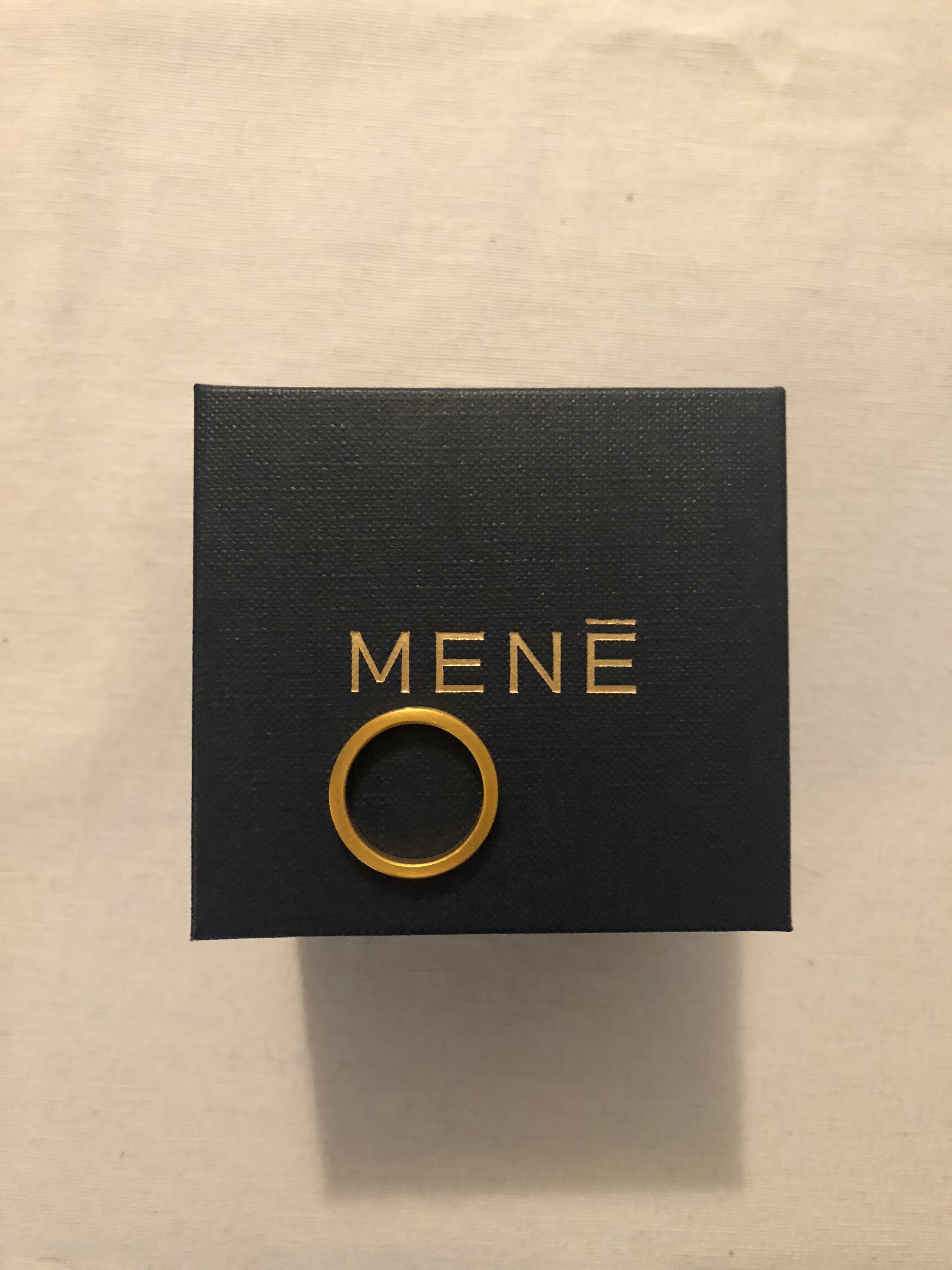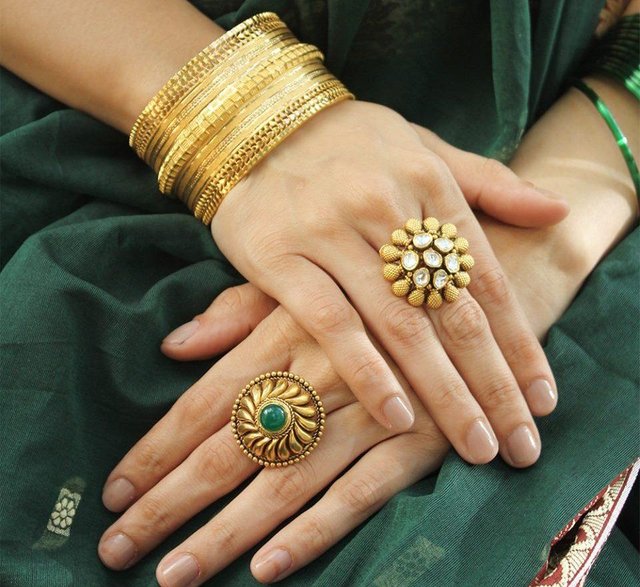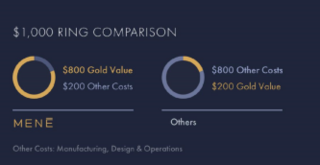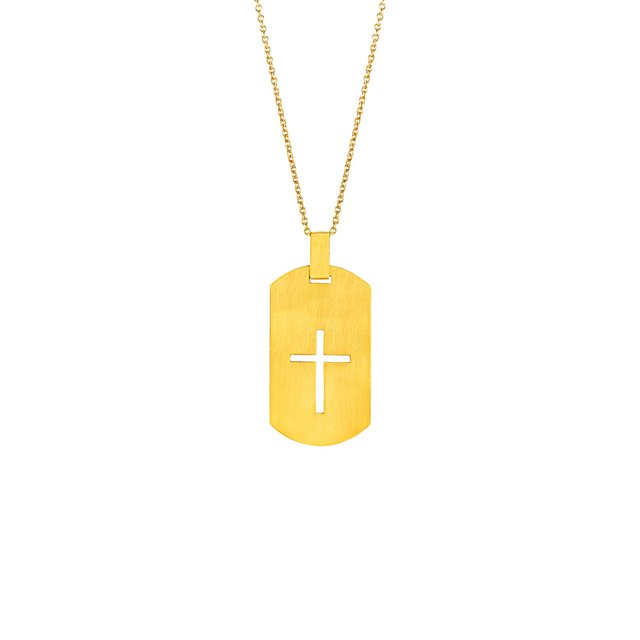The History Behind Mene 24k Gold Investment Jewelry - As Written By Its Co-founder Roy Sebag
(images sourced from www.mene.com)

(writing and publishing credits Roy Sebag and www.the medium.com. you can find here:
https://medium.com/@roysebag/the-gold-jewelry-standard-a-continuous-system-from-ancient-times-to-present-day-57e16fb63522
I wanted to share this essay with you, which was written by Roy Sebag.
Being an economics nerd and a gold/silver collector, I found it fascinating.
I have many Asian friends, and never quite understood their insistence on pure 24k Gold, until recently.

This essay highlights the economics and financing involved within the Eastern gold jewelry markets, and the unusual differences between Eastern and Western cultures, when it comes to their view of gold as a commodity, as an investment or store of wealth, and as heirloom gold jewelry.
It helps shed some light into why Mene Jewelry was founded, and also the niche that Mene Jewelry will most definitely fill in the Western World!
There are Trillions of dollars of 24k pure gold jewelry being bought and sold worldwide, while we shop for 10k or 14k gold trinkets at the discount department stores!
Mene 24k Gold is not only beautiful jewelry with timeless designs, but a lasting financial investment.
Great essay Roy. I really think that you are onto a unique concept in jewelry and investing.
Written by: Roy Sebag (CEO Goldmoney Inc and Co-founder of Menē Jewelry.)
Contrarian thinker and wisdom-seeker in the realms of economics, history, philosophy, and physics. Founder: Goldmoney Inc and CEO: GoldMoney Inc.@goldmoney
Jan 14, 2017
The Gold Jewelry Standard — An Introduction to Menē (“meh-ney”)
A sampling of ancient pure 24 karat gold jewelry dating 7000BC to 1000AD
Last fall, Josh Crumb and I spent three weeks in China and India. We were invited as guests to each country by leading families involved in the gold industry. In India, by a family who controls the leading gold bullion trading business. In China, by a family that owns Chow Tai Fook, the largest gold jewelry business in that country.
It was during this trip that we spent an extensive amount of time studying the local gold jewelry markets. We visited factories, markets, dealers, manufacturers, and financial firms involved in gold jewelry finance.
On the third day it began to dawn on us that this “jewelry “ was not what we were used to in the West. Our first observation was the jewelry seemed to be made of 24K pure (99.99%) or 22K (92%) gold. In the West, I had never seen a jeweller sell an item with purity in excess of 18K (75%).
This whole “jewelry ecosystem” in the East appeared to be a vehicle for pure gold ownership with a sophisticated financial economy around it. This economy included: financing, lending, and layaway firms servicing an estimated $2 trillion in jewelry owned by 2 billion citizens in China and India. One $4 billion publicly listed entity in India (Muhtoot Finance) operates a business which extends loans against jewelry through a network of 4,000 branches. With a loan book totalling 250 tonnes of gold jewelry ($10 billion), Muhtoot would rank as one of the larger regional financial institutions in the US.
Even more impressive was the the integrity of this decentralized gold jewelry economy. The system had evolved over thousands of years and is therefore far reaching. No matter where we traveled or which jeweler, manufacturer, or lender we visited, this pure gold “jewelry” was always bought or sold using a simple formula: (Purity of Gold x Weight of Gold x Daily Gold Value) + 7–10% markup for design. To my personal amusement, this transparent process remained the same irrespective of whether the purchaser was rich, poor, old or young, all of them having a clear understanding that they were not purchasing jewelry but acquiring gold.
It is important to note that citizens in these countries cannot simply buy US Dollars or trade into stronger currencies. Moreover, the unequivocal performance of gold vs. Indian Rupee or Chinese Renminbi shows, Indian and Chinese citizens buying gold for family dowry (as their ancestors have done for thousands of years) have preserved their wealth better than most developed-world hedge funds and middle-class savers.
It was during this trip that Josh and I had an epiphany: Pure gold jewelry, as practiced in the East, was the only true gold standard.
Jewelry in the East today remains consistent with the ancient tradition dating back 10,000 years: Jewelry as a vehicle for gold ownership, a store of enduring value that enables humans to measure, store, and transport an earned surplus of savings generated through cooperation with fellow man.
History of Jewelry — The Only True Gold Standard
Gold (Au) has been desired as a rare element due to its physical attributes; it’s exceedingly rare, yet lasts forever. In a cooperative system, an intermediate commodity is required to facilitate exchanges of various goods, services, and skills, given that barter becomes inefficient at scale and over wide geographies. Gold ascends as the premier commodity money due to its superior physical properties, never decaying while all goods and services suffer from diminishing utility over the immutable arrow of time.
To fully understand gold’s uniqueness, one must be proficient in at least four critical subjects: Physics, Economics, Geology, and Anthropology. This eclectic mix of disciplines may seem odd at first, but the ancient man was well-versed in each. It is only in the modern age that a professor of economics will lack sufficient knowledge of geology, where he or she would be reminded of the relative finite abundance of elements in the earth and understand that for each gram of gold we extract from the planet, we could yield 5,000 grams of copper using the same time, energy, and labour.
These facts are important as most academics’ “conventional” wisdom in the modern era suffers from cognitive and causal delusion when it comes to gold; they believe its value is not intrinsic and is instead subjectively ascribed by the whims of the market. In their quest to nullify gold’s value they even dare point to jewelry[1] as an example of how gold’s adornment exemplifies subjective expression and therefore subjective value. In reality, the empirical study of jewelry markets helps elucidate and reconcile gold’s intrinsic value. It is not jewelry that’s being adorned for subjective expression; gold is being acquired as a measure and store of enduring value.
The jewelry industry is the only true gold standard — one continual and causal chain of transactions linking ancient Mesopotamia to the present. Incorporating this knowledge, we can view various government-mandated gold standards where the currency was backed by physical gold (either fractionally as in the case of the U.S. Gold Standard, or 100% as was the case in various other attempts through history) as attempting to compete with the hegemony of the global gold jewelry standard.
Expanding on this thought: Gold was not monetized and demonetized throughout history because governments said so; gold was always money in the form of jewelry for most of the population. It was governments that would, owing to prosperity and fiscal prudence, back their currencies by gold in a demonstration of strength — thereby competing with and attracting capital from the gold jewelry standard.
This ancient tradition continues to thrive in the East and most emerging countries today just as it was 10,000 years ago. In countries such as: Brazil, Russia, India, China, Malaysia, Indonesia, Philippines, Thailand, Vietnam, Pakistan, UAE, Singapore, Saudi Arabia, etc., the average jewelry item is sold in a manner that ascribes 90% of the purchase price to the pure gold value and just 10% of the purchase price to the subjective value attributed to gems or design. In other words, when you purchase a ring for 1,000 Indian Rupee, that ring has 900 Rupee worth of gold value when you walk out the door. That 900 Rupee is a savings weight of gold that can be passed down, sold, or borrowed against in the future.
In terms of importance, jewelry in these cultures is desired once attaining sufficient food, shelter, and clothing and is viewed as a bridge to eventual land or property acquisition.
The story is different in the West in countries such as the U.S., France, Australia, Spain, Italy, and the U.K., where the last 50 years have seen a marked decline in the relationship between the definition of jewelry in general — and “Fine Jewelry” specifically — and the actual gold content as a percentage of purchase price.
Today, the average jewelry item in the West has 90% subjective value attributed to gems and design and merely 10% pure gold value, the result of which is that most Western jewelry becomes worthless almost immediately after purchase. Taking that same example: A western jewelry buyer will spend $1,000 buying a ring that has at best $100 intrinsic gold value.
The Jewelry Industry — A Story of East vs. West
Every year, $310 billion of jewelry is bought by roughly 1 billion households and the market has been growing by about 5% per year globally. This equates to roughly $1 million per minute. To place the scale of this market in perspective, the entire internet advertising market, where Google, Facebook, Twitter and Tencent derive revenue, is half the size of the jewelry market at $170 billion (annually).
Within the $310 billion jewelry market, there is roughly $130 billion of pure gold (2,600 tonnes); however, this split isn’t equal. To understand what’s happening, we must divide the $310 billion of jewelry sold into two markets: East vs. West.
In the West, $180 billion of jewelry is bought every year with gold value of just $13 billion; therefore, most jewelry in the west loses 90% of its value upon purchase and has little resale value.
In the East, $130 billion of jewelry is bought every year with gold value of $117 billion. This gold subsequently serves as a store of value appreciating against currency and non-storable commodities. It also powers a “jewelry economy” that benefits billions of people around the world with a stable store of value for savings, collateral for borrowing, and value exchange across geographies.
Consumers in the West are getting the short end of the stick, a terrible deal indeed. This can be reconciled by simply analyzing historic jewelry prices. By examining Tiffany & Co.’s annual “Blue Book”, which has been published for more than 100 years, one can easily see the deterioration in the ratio between fine jewelry price and gold value in the West — a ratio that used to be consistent with ancient tradition and has only been declining over the past 50 years.
Jewelry Buyer in the East — “What is the weight and purity? What is the Gold Price today?”
Jewelry Buyer in the West — “What is the retail price?”
For roughly 3 billion people in the Eastern world, jewelry is the same today as it was 6,000 years ago:
Jewelry is pure 24 Karat gold.Prices are determined by multiplying the weight of each piece by the changing daily gold value. A minimal and transparent design fee is added above the gold value.Jewelry can be sold or exchanged as easily as it can be bought.
When purchasing jewelry in the Western World you will find that:
Items are gold plated or only 14–18 Karats (58%-75% pure) when branded as “fine”.The gold weight is almost never disclosed; therefore, prices are purely subjective.Jewelry does not maintain its original purchase value or appreciate.

Over the past 30 years, the western jewelry industry and luxury jewelry brands have lost sight of jewelry’s historic role as a store of enduring value, seemingly forgetting that pure gold was the historic foundation that enabled jewelry to transcend time and safeguard memories as an heirloom.
The myth that jewelry can’t be crafted with pure 24 Karat gold due to its “softness” contradicts thousands of years of history, not to mention a vibrant 24 Karat gold jewelry market in the Eastern world. While it’s true that pure gold is more malleable than other metals, it’s still hard and indestructible.
The Indians and the rest of the emerging nations continue to treat gold jewelry as money and a store of value. That is why they demand high karatage. My recommendation is you begin demanding high karatage jewelry at an honest and transparent price.
Introduciong Menē (pronounced “meh-ney”) My Latest Venture
My latest venture Menē, crafts 24 karat gold and platinum investment jewelry™ that is transparently sold by gram weight. By combining innovative technology with timeless design, Menē restores the ancient tradition of jewelry as a store of enduring value.
Menē was founded along with my friend Diana W. Picasso to restore this ancient wisdom pertaining to jewelry. Menē empowers consumers with pure 24 karat gold and platinum jewelry that retains its savings value while preserving the token of love and friendship, to reify a sacred commitment, or to immortalize a moment in time.
We retail our jewelry direct-to-consumer through a transparent and empowering online shopping experience. On our website, customers can buy, sell, and exchange their jewelry by weight at the prevailing daily price for gold as quoted on the international bullion markets.
Menē Founding Principles
Three principles of transparency uphold our commitment to crafting jewelry that sustains its original value:
Menē jewelry is crafted from pure 24 karat gold (Au) and platinum (Pt) with no diamonds or gemstones. This means our creations become a timeless physical object that will never tarnish (unlike man-made chemical alloys of 18 karats or less). It also means that simply weighing Menē jewelry will always unveil its objective value.2. Menē jewelry is sold by the gold and platinum weight value plus a transparent design and manufacturing premium. This premium is never more than 20% of the precious metal value each day. The result: a $1,000 Menē ring will have at least $800 in gold or platinum value at the time of purchase while $200 is the revenue earned by Menē.3. Menē provides a lifetime guarantee to buy-back or exchange any authentic Menē jewelry at the prevailing gold and platinum prices minus a 10% fee.
These principles result in a truly revolutionary value proposition for the consumer. A rise in gold or platinum values of just 21% would render the jewelry more valuable than at the time of purchase. Since 1971, the price of Gold has risen by 3,100%. If history is to repeat, Menē jewelry will maintain its purchasing power and appreciate as an exceptional investment.
Jewelry can be far more empowering using the Eastern/Ancient model where it is viewed as accessible savings. Though the margin is much lower, the nominal transaction value is higher as the consumer is making an informed savings decision to acquire the jewelry rather than a discretionary spending decision.

The potential to introduce this paradigm shift to the west, where the savings economy is worth trillions of dollars a year is enormous. Additionally, there is an opportunity to establish leadership in the East by codifying the ancient tradition through a transparent and trustworthy brand.
Eastern World: Build a trusted brand and leadership within the fragmented jewelry economy. Set standards, transparency, and direct customer-relationships.Western World: Establish a trusted direct-to-consumer jewelry brand based on unique 24 karat concept. Re-introduce jewelry as savings through a disruptive business model with lower margins but higher customer lifetime value. Grow the industry beyond consumable flow figure by competing with the western savings economy ($200 Trillion).
Mene.com
Goldmoney Announces Investment in Mene Inc.
Here’s your chance to finally own a Picasso
Gold, Goldmoney, and Mene
I hope that you have enjoyed this article. I am always drawn in by people's views of economics, gold, and what the concept of "money" really is to each culture.
If you would like to research Mene 24k Gold Investment Jewelry, you an do so at their website below:
To browse or purchase Mene 24k Gold Jewelry, you can use my personal invitation link below:
https://mene.com/invite/YcIYSv
Important note: For the energy spent extracting only 1 gram of pure gold from the earth, the same energy would yield 5,000 grams of copper.
Thanks for reading and please upvote, follow, and Resteem!!
You have received an upvote from STAX. Thanks for being a member of the #steemsilvergold community and opting in (if you wish to be removed please follow the link). Please continue to support each other in this great community. To learn more about the #steemsilvergold community and STAX, check this out.
Thanks Stax!! @silvergoldbotty
Nice work @jbcoin! Thank you !
Thank you! I appreciate your help @goldmatters.
You are a fantastic advocate @jbcoin :)
Thanks for the support @jbcoin! Can you fix where it says “Written by....” Goldmoney is missing a letter :) . Also would you mind including a link to the actual medium article in this post? Thank you! - GM
Sorry about that. I think I'm good now.